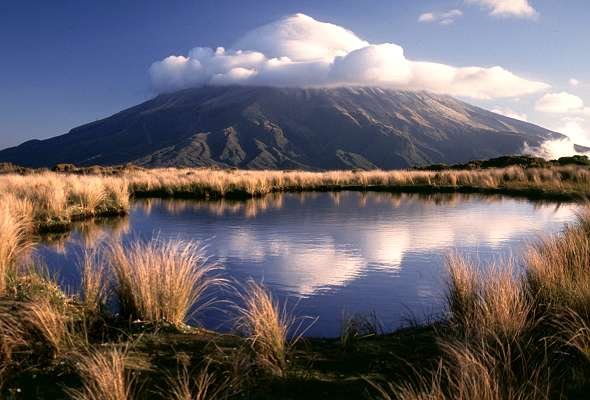6.1 How can people increase the likelihood of a volcanic eruption?
A volcanic eruption is a natural event – therefore people are not able to increase the likelihood of an eruption occurring. However, people are able to influence the effect a volcanic eruption will have on them.
6.2 How can people increase the effects of a volcanic eruption?
1. Migration of people to volcanic hazard sites:
As the population grows there is more pressure to use available land. The sides of many volcanic cones are therefore under pressure to be built on. For example, Mt Eden in Auckland.
2. Population growth = more buildings:
As the numbers of people increases, so does the number of buildings and facilities which are increasingly expensive to replace. For example, a volcanic eruption would cause much more devastation today than it would have 100 years ago.
3. More people using ski fields:
As our disposable income increases, people today are more likely to visit ski fields in potentially hazardous locations. For example the number of tourists to Whakapapa has more than doubled in the last 20 years.
4. Farmland is used more intensively:
The good volcanic soils in volcanic areas are put to good use today with intensive farming methods (more stock/crops in a small space). The New Zealand economy relies heavily on the Taranaki region; so if a volcanic eruption affected this area, the New Zealand and the local economy would suffer.
5. Time:
The longer it is between volcanic eruptions then the less likely people are to be prepared. Volcanic eruptions occur infrequently in New Zealand, and as a result, people’s perception of volcanoes is that they are not a threat.
6.3 How can people decrease the effects of a volcanic eruption?
1. Seismometers:
These have been set up in three locations – at the crater lake, at Mangaku and at Whakapapa village. Any movement detected will be monitored by a computer at the Department of Conservation (DOC) visitor centre, which if significant, will be relayed to the ski fields where alarms will ring.
2. Lahar warning systems:
Vibration sensors can detect any slight movement in the crater lake that will be sent to a computer at Tokaanu. The computer then relays this information to DOC and the police. Flashing lights and signs can then be put into place to divert traffic and stop trains at risk.
3. An automatic water level recorder:
This has been set up in the Whangaehu River to detect sudden change in level that may signal a lahar. Trains can then be prevented from crossing bridges at risk.
4. Tiltmeters:
These are used to measure any significant change in the shapes of Ruapehu that could indicate a volcanic eruption is likely.
5. Lake samples:
These are taken regularly and tested for changes in temperature and chemicals present.
6. Heat-sensitive satellites:
These cameras can detect heat changes that could indicate if magma is rising.
7. Remote control cameras:
These are permanently set up at the crater lake so that pictures of the vent can be relayed at any time to vulcanologists.
8. Civil Defence practice:
Emergency teams are constantly checking that the correct procedures are known and will work.
Think about how people can decrease effects of a volcanic eruption BEFORE, DURING and AFTER. Categorise 6.3 into these three headings.
Subscribe to:
Post Comments (Atom)




No comments:
Post a Comment